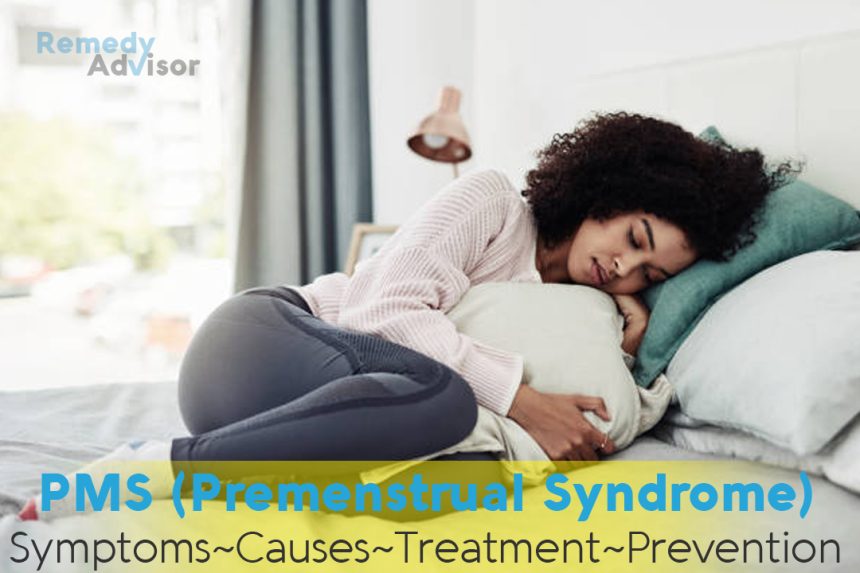What is it
One-fourth of menstruating women have no premenstrual symptoms at all. The rest have some symptoms (breast tenderness, bloating, headaches, heightened awareness of emotions), usually mild, that signal the onset of a period. For the great majority of women, such symptoms can be annoying, but they are not disabling. However, 5 to 10 percent of women have severe, disabling symptoms known as premenstrual Syndrome, or PMS.
PMS refers to a variety of physical and psychological symptoms that often appear one to two weeks before the start of a menstrual period a time known as the luteal phase. For many women the tension evaporates in a burst of energy and feeling of well-being just before a period starts. Others find premenstrual symptoms minor nuisances that vanish after a few days. But for some women the problems remain and may intensify over a two-week period.
Scientists first began studying PMS in earnest in 1931, when it was then termed premenstrual tension, and there’s been no lack of research since then. Nonetheless, there’s still no agreement about what causes PMS or how to treat it. Even the definition remains in dispute. One difficult}^ in diagnosing PMS is that some of the more disturbing emotional symptoms (irritability; depression, fatigue) may, in some cases, not be tied to the menstrual cycle at all.
The diagnostic and statistical Manual of mental Disorders (DSM-IV), the bible of the psychiatric profession, calls severe PMS premenstrual dysphoric disorder, or PMDD, to distinguish it from non-disabling PMS. To be diagnosed with PMDD, a woman must have 5 or more of the 1 symptoms listed above during the week between ovulation and the onset of menstruation. The symptoms must decrease and begin to disappear shortly after menstruation begins; they must not be present before ovulation. They must markedly impair a woman’s ability to function and persist for at least two cycles. Also, the diagnosing physician must rule out other psychiatric and medical conditions (thyroid problems or depression, for example) that might be involved.
Symptoms
PMS, or premenstrual syndrome, is associated with both physical and psychological symptoms that include the following:
- Depression or feeling of hopelessness.
- Anxiety.
- Significant mood swings.
- Irritability leading to interpersonal conflicts.
- Decreased interest in normal activity.
- Difficulty concentrating.
- Fatigue.
- Changes in appetite.
- Sleeping too much or too little.
- A feeling of being out of control.
- Physical symptoms such as breast tenderness, headache, joint and muscle pain, bloating, and weight gain.
What causes it
The cause of PMS is unknown, according to the latest statement from the American College of Obstetricians and Gynecologists (AGOG). One theory is that the brain chemical serotonin (which regulates mood) is somehow adversely affected by hormonal activity in women with PMS. About aU that can be said is that it’s related to the menstrual cycle. Symptoms always cease when a woman experiences surgical or natural menopause. It may be that some women are more vulnerable than others to the hormonal shifts of the menstrual cycle.
What if you do nothing
PMS symptoms should clear up within a day or two after the onset of menstrual bleeding. If symptoms are so severe that they interfere with normal life and interpersonal relationships, contact your physician.
Home remedies
Remedies and treatments for PMS abound. A study published in the 1980s reported that more than 327 treatments had been proposed. A combination of some of the following measures may help, but claims for most remedies are unproved and few have proved worthwhile.
Keep a diary
Since there are no specific tests for PMS, charting your daily physical and emotional symptoms may help. Keep a daily diary of your cycles for a minimum of three months, noting what the symptoms are, their severity, and exactly when they occur and disappear. Such a record will give you a sense of control, as well as assist in the diagnosis and treatment of the disorder if you decide to seek medical advice. (If these symptoms do not fall within the two weeks preceding a period, they are probably not connected with your menstrual cycle.)
Try exercise
As with menstrual cramps no specific exercise will relieve PMS. Nevertheless, regular aerobic exercise like walking, running, swimming, bicycling, in-line skating, and aerobic dancing can help elevate mood, reduce fluid retention, and relieve stress. Try to exercise several times a week for at least 20 to 30 minutes.
Reduce stress
Learn specific relaxation techniques such as yoga, meditation, or progressive muscle relaxation.
Eliminate caffeine
Some people have found this helpful.
Don’t count on vitamins and minerals
If you want to take a daily vitamin supplement, there is no harm in it. Vitamin B6, widely touted, has not been shown to have any value for PMS.
Think twice about PMS products
The liquid carbohydrate product called PMS Escape is on the market as a supplement, not a medicine, and thus its claims (based on one very small study) remain unproved. It’s a high-calorie, sugary drink (dextrose, not sucrose, but sugar is sugar) with some vitamins added. There’s no reason to think it would be more helpful than any other sweet fruit drink.
Herbal PMS remedies are also promoted. While taking evening primrose oil is often recommended as an alternative therapy, there’s no evidence it works. Other herbs are also of questionable value.
Prevention
There is no way known to prevent PMS.







